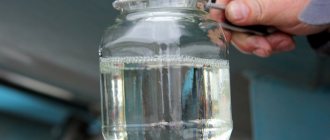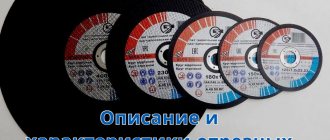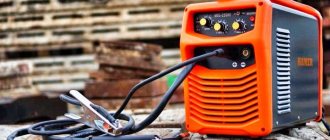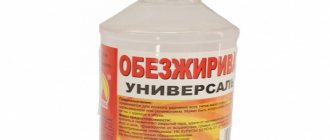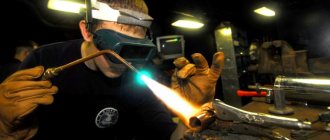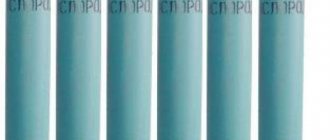- home
- Helpful information
- Properties of kerosene, composition and characteristics
Today you can buy kerosene for different purposes. A transparent, liquid substance with an oily structure, it is in demand in many industrial and household areas. The properties of kerosene made it universal. The petroleum product can be combined with different types of raw materials that differ in structure. The substance is often used as a fuel, impurity or lubricant.
To obtain kerosene, oil is rectified and recycled. In some cases, additional treatment is performed with water.
Features of the composition and basic properties of kerosene
Kerosene - the composition and properties of the product directly depend on the method of its processing. During the production process of the substance, various impurities are formed. Connections such as:
- Nitrogen.
- Oxygen.
- Sulphurous.
The volume of kerosene may vary. It directly depends on t° indicators
In a multifractional composition, hydrocarbons are indicated as percentages:
- 2% - unlimited.
- 3-25% - aromatic.
- 21-50% - naphthenic.
- 23-60% are aliphatic.
Indicators of kerosene of different brands according to the provisions of GOST 4753-68
Kerosene, the characteristics of which differ depending on the brand, is popular due to its excellent performance:
- Burning.
- Pumping.
- Volatility.
The use of this petroleum product is relevant at any time of the year. Regardless of the conditions, all kinds of deposits do not form in it.
Kerosene is in demand not only for lubricating mechanisms, but also as a fuel in everyday life and at work.
When considering kerosene, technical characteristics, as well as physical and chemical indicators, it is necessary to consider:
- Heat of combustion.
- Flash point.
- Degree of kinematic viscosity.
- Turbidity level.
- Density value.
- Flame mark.
- Acidity number.
These indicators are important when choosing a certain suitable type of raw material and differ not only depending on the brand of kerosene, but also the conditions of its production and storage.
How is aviation gasoline different from automobile gasoline?
It is immediately worth noting that most types of air transport (commercial aviation) use aviation fuel for flights, which is also used for work. Direct aviation gasoline is used only for aircraft that operate using piston engines (this can be either midget aircraft or small commercial aircraft). This has led to the fact that the production of aviation gasoline has become a highly specialized activity with relatively small volumes of output. There are three main factors that are critical to the fuel used for aircraft:
- detonation resistance, which is significantly higher than that of automobile fuel;
- fractional composition (it is decisive for the boiling point of gasoline and its volatility);
- chemical stability;
It is also worth noting a higher octane number, the ability to perform the functions of a coolant, a lubricant for the rubbing elements of the engine, and a higher specific heat of combustion.
Basic physical properties of kerosene
The physical properties of kerosene affect both the quality characteristics and the area of use of the product. The substance is used for technical needs in various industries. It is often used for heaters, added to fuel for boiler houses, etc.
Among the basic properties considered when choosing raw materials, it is worth highlighting:
Heat capacity
It is necessary to take into account the heat power generated during complete combustion of kerosene - permissible values vary in the zone from 42.9 to 43.1 MJ per 1 kg.
Specific Heat Capacity Table for Kerosene
Density
To determine the indicator, a relative value is required. At standard t° +20°С, the mark should be within the range of 780-850 kg per 1 m3. In the calculation, not only the temperature of the product is important, but also the expected density of distilled water.
The density of kerosene depends on temperature, as shown in the table
Viscosity
At +20°C, the level of kinematic viscosity will be 1.2-4.5 mm2. A decrease in the indicator occurs with increasing temperature. In particular, the fractional composition of kerosene affects:
- Productivity of fuel systems.
- Efficiency of the working mixture.
- Safety of combustion processes in the engine.
Table of dynamic and kinematic viscosity of kerosene
Flash
The limiting flash point depends on the composition of kerosene - from +28°C to +60°C. According to the provisions of GOST, the substance is considered fireproof.
To replace winter or arctic diesel fuel with kerosene, you will need to add additives. With their help you can increase the cetane number and reduce wear
Lamp "Bat"
To protect the flame from the wind, special models were produced - “Bat” lanterns.
This popular name comes from the German company FlederMaus, which in the 19th century launched the production of wind-resistant lanterns.
This name has firmly taken root in everyday life. It’s like with a Primus (Primus is primarily a company, not a product) or a Xerox.
Although at first there was an alternative name for such products - a storm lamp.
Among the branded manufacturers of kerosene lamps, the most popular now are Petromax and Feuerhand Baby Special.
The protective kerosene stove is capable of trouble-free operation in wind conditions of up to 15 m/s!
It should be noted that this is a very strong gusty wind. If you have a poorly secured electric light on your porch, then such gusts can easily shake off and damage even a modern incandescent light bulb.
Meanwhile the kerosene stove will burn!
Kerosene lamps occupied a special page in history during the Great Patriotic War. At the front, of course, there was no electricity.
Meanwhile, dugouts, headquarters, and medical battalions needed to be illuminated with something. In this connection, a number of factories were quickly converted to mass production of such products.
Even today, military warehouses maintain a supply of kerosene lamps.
Chemical properties of different types of kerosene
There are many reasons why kerosene is used everywhere; the chemical properties of the petroleum product allow it to be used in many industries. Product brands differ in their limits and technical capabilities.
The saturation of raw materials with aromatic hydrocarbons varies, so different types of kerosene can be produced:
Aviation
It is divided into jet and aircraft fuel. Has a high ignition rating and also:
- Suitable for lubricating engines and fuel supply systems of various aircraft.
- Used as a refrigerant.
- Characterized by increased oxidation when heated.
- Differs in stability of indicators.
- It is resistant to low temperatures.
Kerosene is often used to remove plaque and rust on equipment components.
Technical
According to GOST 18499-73, the KT-1 and KT-2 varieties may contain no more than 7% aromatic carbons. The substance serves as a raw material for the production of ethylene, and also replaces other solvents and substances for washing or cleaning:
- Equipment units.
- Transport details.
Up to 20% kerosene can be added to summer diesel. This allows you to reduce the freezing point without losing the performance properties of diesel fuel.
To determine at what temperature the kerosene becomes cloudy, you need to conduct an optical experiment. It is necessary to observe the change in the throughput of the substance relative to light rays
Lighting
Thanks to the composition regulated by GOSTs “Lighting kerosene from sour crude oil” 11128-65 and “Lighting kerosene” 4753-68, when the product is burned, black soot and soot are not formed. The substance is used for household lighting and heating devices - kerosene stoves, kerosene stoves and kerosene gases. It is used to remove old paintwork. Kerosene is suitable for:
- Cleaning.
- Dissolutions.
- Washing.
- Degreasing.
- Impregnations.
Lighting kerosene, the chemical composition of which is characterized by strong evaporation, is safe for others. The vapor content does not exceed 300 mg per 1 m3.
The composition of kerosene allows it to be used for firing glass and porcelain products
Experts will tell you more about the features of different types of petroleum products. Call, you will be pleasantly surprised by the prices for fuel, kerosene and other fuels and lubricants!
Ecology for the corn farmer
Together with scientists from the All-Russian Research Institute for Petroleum Refining, the company’s specialists began developing a formulation of unleaded fuel with an octane rating of 91 in 2014, and this work has now been completed.
Its result was the appearance of not even one, but two compositions. The first received the designation B-92/115 - for the Russian market. In terms of its characteristics, it fully complies with GOST leaded fuel B-91/115. The second is an analogue of unleaded aviation gasoline 91UL (ASTM D 7547), for which many leading manufacturers are now developing engines, such as, for example, one of the world leaders in this segment, Austrian Rotax. Petr Degtyarev, Director of the Oil Refining Directorate, Gazprom Neft:
“The work on 91st gasoline has been completed, applications for three patents have been submitted, one has already received confirmation, the other two are still at the examination stage,” said Valery Golovachev, chief specialist of the technical policy and innovation activities department of the oil refining and petrochemical development department of Gazprom Neft. “Russian and European normals do not differ much in composition, so production of the entire volume is planned to be located at one site at the Omsk Refinery.”
However, developing the fuel is half the battle. Even the best gasoline that meets all standards cannot be sold unless aircraft engine manufacturers have certified it for use in their products. This is what the Gazprom Neft refining directorate and the All-Russian Research Institute of NP are now doing, starting, of course, with enterprises that produce engines for the An-2 in Russia and Poland. Negotiations in this direction are also ongoing with Rotax. However, only half of the piston aircraft registered in the country can operate on 91-grade aviation gasoline. This is also reflected in statistics: 54% of sales of specialized fuel for piston aircraft engines are 100LL gasoline. Therefore, the company has already begun preparations for a new project, within the framework of which it is planned to develop an unleaded analogue of 100-grade aviation gasoline, and Omsk Refinery, as an industrial partner, has submitted an application to participate in the tender of the Ministry of Education and Science of the Russian Federation for the development of such fuel.
Aviation gasoline standards
According to GOST 1012–2013, aviation gasolines are produced in the following grades:
— aviation gasoline B-91/115. Designed for operation of the ASh-62IR, AI-26V, M-14B, M-14P and M-14V-26 engines.
— aviation gasoline B-92. Supplied under state defense order. Developed as a result of a large set of tests as a single gasoline without standardization of the “grade on a rich mixture” indicator, under certain conditions it can be used instead of B-91/115 gasoline.
Currently, the most widely used imported gasoline with reduced lead content in Russia is Avgas 100LL. This is the main fuel for foreign aircraft, including such common helicopters as R-22, R-44, Cessna-172 aircraft and other types.
Open fire temperature: temperature of the fire in the lighter, influencing factors and classification
A flame is a phenomenon that is caused by the glow of a gaseous hot medium. In some cases, it contains dispersed solids and (or) plasma, in which transformations of reagents of a physical and chemical nature occur. It is they that lead to self-heating, heat release and glow.
The gaseous environment of the flame contains charged particles - radicals and ions . This explains the existence of electrical conductivity of the flame and its interaction with electromagnetic fields.
Devices that can suppress a fire, change its shape, or tear it away from flammable materials using electromagnetic radiation are built on this principle.
The glow of fire is divided into two types:
- non-luminous;
- glowing.
Almost every glow is visible to the human eye, but not every one is capable of emitting the required amount of luminous flux.
The glow of the flame is determined by the following factors.
- Temperature.
- The density and pressure of the gases that participate in the reaction.
- Presence of solid matter.
The most common cause of glowing is the presence of a solid substance in the flame .
Many gases burn with a faintly luminous or non-luminous flame.
Of these, the most common are hydrogen sulfide (blue flame, like combustion), ammonia (pale yellow), methane, carbon monoxide (pale blue flame), and hydrogen.
The vapors of some volatile liquids burn with a barely luminous flame (alcohol and carbon disulfide), and the flame of acetone and ether becomes slightly smoky due to the slight release of carbon.
Flame temperature
For different flammable vapors and gases, the flame temperature is not the same. Also, the temperature of different parts of the flame is not the same, and the area of complete combustion has higher temperatures.
When burned, a certain amount of combustible substance releases a certain amount of heat. If the structure of the substance is known, then the volume and composition of the resulting combustion products can be calculated. And if you know the specific heat of these substances, then you can calculate the maximum temperature that the flame will reach.
It is worth remembering that if a substance burns in air, then for every volume of oxygen that reacts there are four volumes of inert nitrogen. And since nitrogen is present in the flame, it is heated by the heat that is released during the reaction. Based on this, we can conclude that the flame temperature will consist of the temperature of combustion products and nitrogen.
It is impossible to determine the temperature precisely, but it can be approximated since the specific heat changes with temperature.
Here are some indicators for the temperature of an open fire in different materials.
- Magnesium combustion is 2200 degrees.
- The combustion of alcohol does not exceed a temperature of 900 degrees.
- Gasoline combustion is 1300-1400 degrees.
- Kerosene - 800, and in an environment of pure oxygen - 2000 degrees.
- Propane-butane combustion can reach temperatures from 800 to 1970 degrees.
- When wood burns, the temperature ranges from 800 to 1000 degrees, and it ignites at 300 degrees.
- The burning temperature of a match is 750−850 degrees.
- In a burning cigarette - from 700 to 800 degrees.
- Most solid materials ignite at a temperature of 300 degrees.
The flame, which every person can observe when a candle, match or lighter burns, is a stream of hot gases that are pulled vertically upward, thanks to the force of Archimedes.
The candle wick first heats up and the paraffin begins to evaporate. The lowest part is characterized by a slight blue glow - there is little oxygen and a lot of fuel.
It is because of this that the fuel does not burn completely and carbon monoxide is formed, which, when oxidized at the very edge of the flame cone, gives it a blue color.
Due to diffusion, a little more oxygen enters the center. Subsequent oxidation of the fuel occurs there and the temperature increases. But this is not enough for complete combustion of fuel. At the bottom and in the center there are coal particles and unburned droplets. They glow due to intense heat.
But evaporated fuel, as well as combustion products, water and carbon dioxide, practically do not glow. At the very top there is the highest concentration of oxygen. There, the unburnt particles that glowed in the center are burning out.
It is for this reason that this zone practically does not glow, although the temperature there is the highest.
Flame classification
The glow of fire is classified as follows.
- According to visual perception: colored, transparent, smoky.
- Height: short and long.
- By speed of spread: fast and slow.
- By temperature indicator: high temperature, low temperature, cold.
- According to the nature of movement of the reaction medium: pulsating, turbulent, laminar.
- According to the state of the flammable medium: pre-mixed and diffusion.
- By radiation: colorless, colored, luminous.
- According to the state of aggregation of flammable substances: flame of aerodispersed and solid reagents, liquid and gaseous.
In a diffuse laminar flame, three shells (zones) are distinguished. Inside the cone of flame there is:
- dark zone, where there is no combustion due to the small amount of oxidizer - 300-350 degrees;
- luminous zone, where thermal decomposition of fuel occurs and it partially burns - 500-800 degrees;
- the zone is slightly luminous, where the products of fuel decomposition finally burn and a maximum temperature of 900-1500 degrees is reached.
The temperature parameter of the flame depends on the intensity of the oxidizer supply and the nature of the combustible substance. The flame spreads through the pre-mixed medium. Propagation occurs along the normal from each point of the front to the flame surface.
In real-life gas-air mixtures, propagation is always complicated by disturbing external influences, which are caused by friction, convective flows, gravity and other factors.
It is because of this that the real speed of propagation always differs from the normal one. Depending on the nature of the propagation speed, the following ranges are distinguished:
- During detonation combustion - more than 1000 meters per second.
- With explosive - 300−1000.
- With deflagration - up to 100.
It is located in the very top part of the fire, which has the highest temperature. In this zone, flammable substances are almost completely converted into combustion products. There is a lack of fuel and an excess of oxygen . It is for this reason that substances that are placed in this zone are intensively oxidized.
Restorative flame
This part is closest to the center or located just below it. There is little oxygen for combustion and a lot of fuel. If a substance containing oxygen is introduced into this area, it will be taken away from the substance.
Fire temperature in a lighter
A lighter is a portable device that is designed to produce fire. It can be gasoline or gas, depending on the fuel used. There are also lighters that do not contain their own fuel. They are designed to ignite a gas stove. A high-quality turbo lighter is a relatively complex device. The fire temperature in it can reach 1300 degrees.
Chemical composition and color of flame
Pocket lighters are small in size, which allows them to be carried without any problems. It is quite rare to find a table lighter. After all, due to their large size, they are not intended to be carried. Their designs are varied . There are fireplace lighters. They have a small thickness and width, but are quite long.
Today, promotional lighters are becoming popular. If there is no electricity in the house, then it is impossible for it to light a gas stove. The gas is ignited by the resulting electric arc. The advantages of these lighters are the following qualities.
- Durability and simplicity of design.
- Fast and reliable gas ignition.
The first lighter with modern flint was created in Austria in 1903 after the invention of ferrocerium alloy by Baron Karl Auer von Welsbach.
The development of lighters accelerated during the First World War. The soldiers began to use matches in order to see the road in the dark, but their location was revealed by the intense flash when ignited. The need for fire without significant flash fueled the development of lighters.
At that time, the leaders in the production of flint lighters were Germany and Austria. Such a portable device, which is designed to produce fire, found in the pocket of many smokers, can be fraught with many dangers if handled incorrectly.
The lighter should not spray sparks around itself during operation. The fire should be stable and even. The fire temperature in pocket lighters reaches approximately 800-1000 degrees. The red or orange glow is caused by carbon particles that have become hot.
For household burners and turbo lighters, butane gas is mainly used, which burns easily and is odorless and colorless. Butane is obtained by processing oil and its fractions at high temperatures.
Butane is a flammable hydrocarbon, but it is absolutely safe in modern lighter designs.
Such lighters are very useful in everyday life. They can set fire to any flammable material. The set of turbo lighters includes a table stand.
The color of the flame depends on the combustible material and combustion temperature. The flame of a fire or fireplace generally has a motley appearance . The burning temperature of wood is lower than the burning temperature of a candle wick.
It is because of this that the color of the fire is not yellow, but orange.
Copper, sodium and calcium glow in different colors at high temperatures.
The electric lighter was invented in 1770. In it, a hydrogen jet was ignited by a spark from an electrophore machine. Over time, gasoline lighters gave way to gas lighters, which are more convenient. They must contain a battery - a source of energy.
Not very long ago, touch lighters appeared, in which, without mechanical action, gas is ignited by acting on a touch sensor. Pocket-type touch lighters. Basically, they contain advertising-type information, which is printed using pad or silk-screen printing.
Spread speed
Flame propagation through a pre-mixed (undisturbed) medium occurs from each point of the flame front normal to the flame surface. The magnitude of this normal flame propagation speed (hereinafter referred to as NFSP) is the main characteristic of a flammable environment. It represents the minimum possible flame speed. NSRP values differ for different combustible mixtures - from 0.03 to 15 m/s.
The spread of flame through real-life gas-air mixtures is always complicated by external disturbances caused by gravity, convective flows, friction, etc. Therefore, the actual flame propagation speeds always differ from normal ones. Depending on the nature of combustion, flame propagation speeds have the following ranges of values:
- deflagration combustion – up to 100 m/s;
- explosive combustion – from 300 to 1000 m/s;
- detonation combustion – over 1000 m/s.
The color of the flame is determined by the radiation of electronic transitions (for example, thermal radiation) of various excited (both charged and uncharged) particles formed as a result of a chemical reaction between fuel molecules and oxygen in the air, as well as as a result of thermal dissociation. In particular, when carbon fuel burns in air, the blue part of the flame color is due to the radiation of CN ±n particles, the red-orange part is due to the radiation of C2 ±n particles and soot microparticles. The radiation of other particles formed during the combustion process (CHx ±n, H2O ±n, HO ±n, CO2 ±n, CO ±n) and main gases (N2, O2, Ar) lies in the UV and IR part of the spectrum, invisible to the human eye. In addition, the color of the flame is greatly influenced by the presence of compounds of various metals, primarily sodium, in the fuel itself, the design details of burners, nozzles, and so on. In the visible part of the spectrum, the radiation of sodium is extremely intense and is responsible for the orange-yellow color of the flame, while the radiation of the slightly less abundant potassium turns out to be practically indistinguishable against its background (since most organisms have K+/Na+ channels in their cells, then in the carbon fuel of plant or animal origin for every 3 sodium atoms there are on average 2 potassium atoms).
Source: Tideman B.E., Sciborsky D.B. Chemistry of combustion. –L., 1935.
Temperature of combustion of kerosene in air – Security Portal
Jet fuel TS-1 kerosene is produced from the middle distillate fraction of oil by direct distillation of oil, or in a mixture with a hydrotreated or demercaptanized component.
To bring the fuel to the standard requirements for the composition of total or mercaptan sulfur, either hydrotreating or demercaptanization is used.
Main performance characteristics: good volatility to ensure complete combustion; high combustion efficiency and heat to determine flight range; good pumpability and low-temperature properties for supply to the combustion chamber; low tendency to form deposits; good compatibility with materials and anti-wear and antistatic properties.
Application
Kerosene TS-1 is intended for use in subsonic aircraft.
Storage
The manufacturer guarantees that the fuel quality meets the requirements of this standard subject to the conditions of transportation and storage.
Guaranteed shelf life: 5 years from the date of manufacture.
Technical characteristics for kerosene TS 1
| Indicator name | Standard according to GOST (TU) |
| Density at 20°C, kg/m3, not less | 780 |
| Fractional composition: | |
| distillation start temperature, °C | 150 |
| 10% is distilled off at a temperature, °C, not higher | 165 |
| 50% is distilled off at a temperature, °C, not higher | 195 |
| 90% is distilled off at a temperature, °C, not higher | 230 |
| 98% distills off at temperature, °C, not higher | 250 |
| Kinematic viscosity, mm2/s (cSt): | |
| at 20°С, not less | 1,3 (1,3) |
| at -40°С, no more | 8 (8) |
| Low calorific value, kJ/kg, not less | 43120 |
| Height of non-smoking flame, mm, not less | 25 |
| Acidity, mg KOH per 100 cm3 of fuel, no more | 0,7 |
| Iodine number, g of iodine per 100 g of fuel, no more | 2,5 |
| Flash point determined in a closed crucible, °C, not lower | 28 |
| Crystallization onset temperature, °C, not higher | -50 |
| 18 |
| Mass fraction of aromatic hydrocarbons, %, no more | 22 |
| Concentration of actual resins, mg per 100 cm3 of fuel, no more | 3 |
| Mass fraction of total sulfur, %, no more | 0,2 |
| Mass fraction of mercaptan sulfur, %, no more | 0,003 |
| Mass fraction of hydrogen sulfide | absence |
| Test on a copper plate at 100°C, 3 hours. | withstands |
| Ash content, %, no more | 0,003 |
| water-soluble acids and alkalis | absence |
| naphthenic acid soaps | absence |
| mechanical impurities and water | absence |
| Interaction with water, point, no more | |
| a) state of the interface | 1 |
| b) state of separated phases | 1 |
Notes:
1. Specific electrical conductivity is standardized only for fuels containing the antistatic additive Sigbol.
2. Fuel TS-1 of the highest and first grade, T-2 and RT, intended for use in all climatic regions, with the exception of region 11 (according to GOST 16350-80), can be produced with a crystallization onset temperature of no higher than minus 50 °C.
It is allowed to use in climatic region 11 (GOST 16350-80) TS-1 and RT fuels with a crystallization onset temperature not higher than minus 50 °C and an air temperature near the ground not lower than minus 30 °C within 24 hours before departure.
Fuel for use in climatic region 11 with a crystallization onset temperature not exceeding minus 55 °C (RT) and minus 60 °C (TS-1) is produced at the request of consumers.
3. T-1C fuel is intended for special consumption.
4. In fuel after long-term storage (more than 3 years), deviations from the standards specified in the table are allowed:
— in terms of acidity — by 0.1 mg KOH per 100 cm3 of fuel;
- according to the content of actual resins - by 2 mg per 100 cm3 of fuel;
- by the amount of sediment when determining thermal stability under static conditions - by 2 mg per 100 cm3 of fuel.
5. At the request of consumers, T-1 fuel must be produced with a density at 20 °C of at least 810 kg/m3.
6. When producing RT grade fuel with the Hi-Tek-580 additive, the standard for indicator 6 is set to no more than 0.7 mg KOH/100 cm3.
Acceptance rules
Jet fuel is accepted in batches.
A batch is considered to be any quantity of fuel produced in one continuous technological process, homogeneous in its quality indicators and component composition, documented in one quality document. The document must indicate the amount of anti-wear, anti-oxidation and antistatic additives introduced during the manufacture of fuel.
Sample size - according to GOST 2517-85.
If unsatisfactory test results are obtained for at least one indicator, repeated tests are carried out on a newly selected sample taken from the same sample.
The results of repeated tests apply to the entire batch.
Safety
Jet engine fuels are a flammable liquid, boiling in the range of 130–280 °C for RT, TS-1 and T-1 fuels and 60-280 °C for T-2 fuel; The auto-ignition temperature of fuels RT, TS-1, T-1, T-1S is 220 °C, fuel T-2 is 230 °C.
The temperature limits for ignition of fuel vapors and concentrated explosion limits are given in the table:
| Indicator name | TS-1, RT | T-1, T-1S | T-2 |
| Temperature limits for ignition of vapors, °C: | |||
| - lower | 25 | 50 | -10 |
| - upper | 65 | 105 | 34 |
| Concentrated explosion limits, %, volume: | |||
| - lower | 1,5 | 1,8 | 1,0 |
| - upper | 8,0 | 8,0 | 6,8 |
Composition and characteristics of kerosene, main properties of different types
07.02.2018
The properties of kerosene have made it in demand in various fields. A transparent, oily liquid suitable for use as fuel, fuels and lubricants and all kinds of additives. Kerosene is resistant to low temperatures and has high combustion and evaporation rates. It is also compatible with raw materials having a different composition.
Kerosene, a petroleum product obtained by rectification and recycling of raw materials. In some cases, it is additionally hydrotreated
Electricity from a kerosene lamp
With the advent of electricity, kerosene lamps arose a serious competitor, whose triumphant march completely ousted all such lamps from the lighting market in one fell swoop. It was impossible to stop the technological revolution.
However, inventors have already come up with the reverse process in our time. The point is that, under certain conditions, electricity can easily be generated from a kerosene lamp.
Such a thermogenerator was produced in the USSR after the war in the 50s. It was called TGK-3.
It was designed to power household tube receivers. Most often used in remote settlements in the taiga and at weather stations.
You can learn more about the operating principle of the TGK-3 thermoelectric generator from here. And here is a clear example of how such a device works live.
https://youtube.com/watch?v=qeUERF_P5vs
History of the kerosene lamp
Until the second half of the 19th century, animal or vegetable fats were used as fuel in household lamps. They were set on fire in oil lamps and received a dim, smoky, but still reliable source of light.
Kerosene did not exist then. His invention immediately reduced the formation of soot, but most importantly increased light output and brightness.
Thanks to the evaporation of kerosene, the device has become much simpler. There is also no need to pump fuel into the lamp under pressure.
Historically, it is believed that the kerosene lamp appeared in 1853. Austrian pharmacists in Lviv were the first to use kerosene as fuel.
There is quite an interesting story connected with this. At that time, Pyotr Mikolyash lived in Lviv, who owned one of the city pharmacies. Two businessmen from another city offered him a lucrative deal - the pharmacist buys distillate from them at a cheap price, and he distills it into alcohol.
The profit was promised to be astronomical. The distillation process was carried out by a pharmacy laboratory technician named Jan Zech. It was he, together with his colleague Ignatius Lukasiewicz, who, in pursuit of profit, began to spend all their days and nights in the pharmacy.
At the same time, in the process of their work, they actively experimented with petroleum products. Having obtained some semblance of kerosene, they tried to use it in a modernized oil burner. The result exceeded all expectations.
The owner of the pharmacy first put a copy of such a lamp on display, and after a while they began to actively illuminate the streets of Lviv. Rumors of the use of revolutionary lighting reached Austria.
It was there that Rudolf Ditmar's company, having filed a patent, began mass production of a similar product for home use. Kerosene became cheaper and more accessible every year. It was then also called coal oil.
Gradually, the invention reached our open spaces. Initially, all sizes of glass and wicks for kerosene lamps were indicated in “lines”. This tradition has been preserved to this day.
What it is? One line is 1/10 inch (10 dots), which equals 2.54mm. For example, the diameter of the lamp glass at the bottom is 20 lines (50mm).
The wick was also measured in the lines. A lamp with a wick width of 7 lines is about 18mm. Based on this size, it got its name - a seven-line kerosene lamp or seven-line.
The wider the wick, the brighter the lamp shines. One seven-line at maximum brightness is equivalent to a 35W incandescent light bulb.
